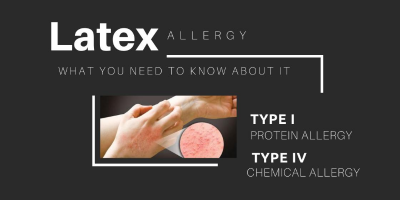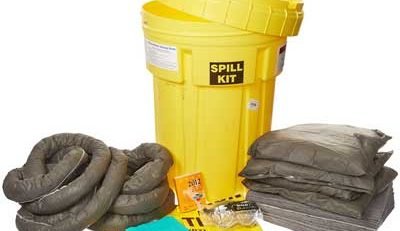What is Latex Allergy – Corporate Station Bangladesh
As COVID-19 has spread around the planet, people nowadays are getting more hygienic concerned. Other than maintain social distancing, wear mask and wash hands frequently, gloves have also become one of the famous items in this battle.
When sanitizing the household and workplace areas, gloves act as the main barrier to prevent the spread of the bacteria and virus to the hands.
Well, wearing latex gloves frequently might become an issue to a minority of population.
Maybe most of the people around you might not have the issue of getting latex allergy, or you might not heard about it before this.
However latex allergy still affects up to 6% of the general population, according to the Centers for Disease Control and Prevention (CDC).
Have you ever heard about latex allergy? What sorts of products might cause latex allergy? How can you prevent it?
And what kind of gloves should you choose if you have latex allergy? Will nitrile gloves be able to solve the latex allergy problem?
In this post, we will try our best to answer your doubts about latex allergy.
What is latex?
Before we dive deep into what is latex allergy, first we need to know a little bit about the term “latex”.
So what is latex? The term “latex” refers to the milky fluid of agricultural origin obtained from the sap of the Brazilian rubber tree (Hevea brasiliensis). It is used to made natural rubber products, and it coagulates (or dry up) when expose to air.
Latex exist in many products that we use in our daily lives, such as latex gloves, rubber bands, balloons, pacifiers, slippers, safety goggles etc.
So, if you are suffering from latex allergy, it is especially important for you to know about the products that contain latex and try to avoid using them and search for the alternatives instead.
For example, you might need to communicate to your dentist or barber so that they can use alternative gloves product when serving you.
Other than affecting individuals, latex allergy might also affect the workers in medical industry, healthcare industry, food industry etc.
What is latex allergy?
Latex allergy not necessary occur upon skin contact with latex, some people might encounter symptoms as well when they come into contact with airborne latex allergens.
Today we are going to talk about 2 main types of latex allergy that are related to gloves, which is Type I and Type IV latex allergy.
(i) What is Type I latex allergy?
Type I latex allergy is an immediate type hypersensitive reaction to one or more latex proteins in natural rubber products, this reaction usually occurs within one hour.
(ii) What are the symptoms of Type I latex allergy?
The symptoms can be as follows:
itching of exposed skin, general or localized rash, watery eyes and/or runny nose, swelling, wheezing or difficulty in breathing.
(iii) What is Type IV latex allergy?
In contrast with the Type I latex allergy, Type IV latex allergy is also known as delayed hypersensitive reaction due to sensitivity to chemicals eg. accelerators used to make latex products.
It can cause contact dermatitis within 6-48 hours (the effect might vary from person to person, and it also depends on the amount of chemicals that the manufacturers are using) after exposure.
(iv) What are the symptoms of Type IV latex allergy?
This type of dermatitis can spread to other parts of the body eg. face if touched. The symptoms are as follows:
itchiness of skin, redness, swelling and worsening of eczema.
How can I prevent myself from latex allergy?
While complete avoidance of latex products might not be possible, patients that are suffering from latex allergy should aim to minimize their exposure to latex.
Avoid the contact of latex gloves with other part of the body, such as the face area, especially when you are not the one that wearing the gloves.
For example, consider talk to your dentist or doctors about your latex allergy situation before you get their diagnosis or treatment, where direct contact using latex-made medical products are essential during the diagnosis or treatment process.
Patients with latex allergy should not only avoid direct contact with latex, but also have to beware of the contact with airborne latex allergens in their daily lives.
Will nitrile gloves be able to prevent latex allergy?
While it is true that nitrile gloves do not contain latex protein and it might eliminate the chance of developing Type I latex allergy, it doesn’t means that one will not develop Type IV latex allergy.
This is because chemicals accelerators are still being used in making the latex product, be it in making a natural latex gloves product or synthetic latex gloves product.
So by just switching from latex gloves to nitrile gloves might not be 100% helpful if one is not sure about the type of latex allergy that they are suffering from.
So what kind of gloves should I choose if I have latex allergy?
As mentioned above, switching to nitrile gloves would not be a 100% solution to solve the problem if you are suffering from Type I latex allergy, as chemicals are still being used in making the nitrile gloves.
The chemical “accelerator” are usually deemed as the culprit of developing the Type IV latex allergy. As there is no absolute gloves solution to combat latex allergy, the market is coming up with the gloves which claimed as “accelerator free”.
But please bare in mind, this kind of gloves may not be entirely accelerator free, instead they are using alternate accelerators which do not yet deemed as causing any latex allergy. You can refer to this link for more information about accelerator free gloves.
If you are suffering from latex allergy and are considering of switching to accelerator free gloves, you should take extra caution if you has a known sensitivity towards a particular chemical accelerator.
Latex protein test on natural rubber gloves
If you are having doubts about the content of latex protein in natural rubber gloves, there is an international standard EN455-3 that might clear up your doubt.
Tests are carried out to discover the latex protein levels on the glove. The higher the level of protein, the higher the chance of irritable skin.
For your information, we have sent our natural rubber gloves to accredited lab by Malaysia Rubber Board (LGM-Lembaga Getah Malaysia) for extractable protein content test.
In compliance to the standard EN455-3, our gloves have minimum level of protein content, hence having a low chance of developing Type I latex allergy, providing gloves users peace of mind when using our gloves.
Final thoughts
We hope that this article might help to clarify the difference between Type I and Type IV latex allergy and also the myth of switching to nitrile gloves in order to prevent latex allergy.
If you have any question regarding this topic, feel free to reach out to us!












Leave a Reply